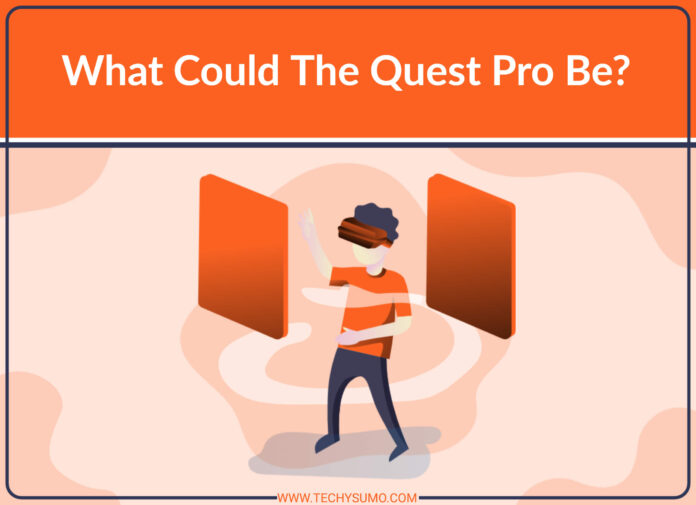In terms of virtual reality technology, you’ve likely noticed the variety of options on the market; some affordable and some a little pricier. So, what might the Quest Pro be, should it come to fruition? We already know that Facebook has been hinting at such an advanced Quest model, while consumers currently have the option to purchase the original Quest or Quest 2.
The Quest 2 came with significant improvements and the price was still low enough that impulse-buyers could definitely act on the purchase of it. In fact, the Quest 2 still continues to see strong sales.
While we can definitely speculate what the Quest Pro might entail, nobody knows for sure yet. You can find an interview of Mark Zuckerberg commenting on the possibility of a 3rd Quest product here. And while us, as consumers, can only guess what this new product might include, it’s likely that even those developing the product aren’t quite sure yet what the details will be.
This article is simply discussing what it could be and who might benefit the most from purchasing it.
Table of Contents
Could the Quest Pro Be the Quest 3?

Again, this is simply speculation because there has been no actual, hard evidence identifying as much, but it’s no surprise that we would assume if they release another device, it would be the Quest 3. If it is in fact a ‘Pro’ version, that means the target market would be different and not so much ‘mainstream’.
Just look at Apple for example. You have the mainstream iPad, the iPad Air, and then finally, the iPad Pro. The latter of these is aimed at consumers that are looking for something to help with content creation but that require a professional-grade display.
So, it seems to me that if the Quest Pro is released as an independent product line, if it follows the same method as the iPad, some of the features included with the Pro version will trickle down to the first two Quest devices.
Who Might Use a Quest Pro?
So, if the Quest Pro were released, who would the target market be? If we safely assume that the ‘Pro’ would have the same meaning as other ‘Pro’ products, the main target would likely be VR power-users and business users. There is, of course, a possibility that content creators could be targeted, but that’s more unlikely. I would imagine that the Quest Pro would target those who are looking to test and develop virtual reality content. This would provide a great platform for them to do so.
What about the ability for the ‘Pro’ version to run the current applications for Quest? I imagine these applications would work with a pro version; however, I personally feel that the pro’s specifications wouldn’t likely be improved upon.
What about hardcore VR fans? Will they be a part of this target market? Possibly, however I still feel that it will favor other markets including Medicine, education, 3D design, engineering and more. It would definitely be something worth investing in because you will get your money back in the long run.
Sensors May Play An Important Role

When a new product is released, especially one that follows a previous one, it’s expected that the specifications will be improved or at least better than the previous release. However, I don’t see this as being what makes the product ‘different’ from the prior. It’s always likely that many features will be improved, whether it’s the screen, GPU, CPU, optics or something else, but that doesn’t make the product ‘different’ from the previous ones; just an ‘improved’ product.
Also read How Insurers Leverage Machine Learning Processes.
In my opinion, with a new release of the Quest, I expect the sensors will be much better. They might do this in the form of different types of sensors, or adding more sensors, than the prior versions. An improvement in the accuracy of hand-tracking may also be an important feature.
If you take the interview I mentioned earlier with Mark Zuckerberg, there could be some serious technology included in the next Quest. For example, he mentions eye-tracking technologies, which is likely something developers have been considering implementing for standard VR.
In fact, that technology has already been rumored to be included in the PSVR2. Another feature that would be useful for users would be heart-rate sensors, or galvanic skin response. This could be a game-changer for those that research and study VR simulations.
Mixed Reality Feature
For those who haven’t had or used an Oculus, they recently added an API feature. This allows developers to use passthrough mode, which means the Quest can offer mixed reality applications. Unfortunately, the current camera quality for passthrough isn’t the best for mixed reality. It distorts the image and in black and white, it lacks real excitement. I can’t help but wonder if the new Quest Pro or Quest3 will offer undistorted imagery and in color instead of black and white. I have no doubt that there will definitely be some pretty great apps that use mixed reality.
In addition, this type of application will be very sought after, and in a variety of professional contexts. So hopefully the new Quest will include color cameras.
What About Mobile Data Hardware?

I can’t help but also wonder if the new Quest will be the first Quest to feature 5G…I say 5G because it’s among the best technology for wireless streaming with low-latency. Then the variety of services would be quite impressive when you add a fast broadband connection.
Should You Avoid Buying A Quest Device Now?
I don’t believe so. There’s not much hard evidence on this new product development so you could be waiting awhile…or you could purchase a Quest2 for under $300 and start enjoying all the features it includes. Besides, you’re not likely going to toss your existing Quest once a new one becomes available, so there’s no reason to wait for a new version.


























